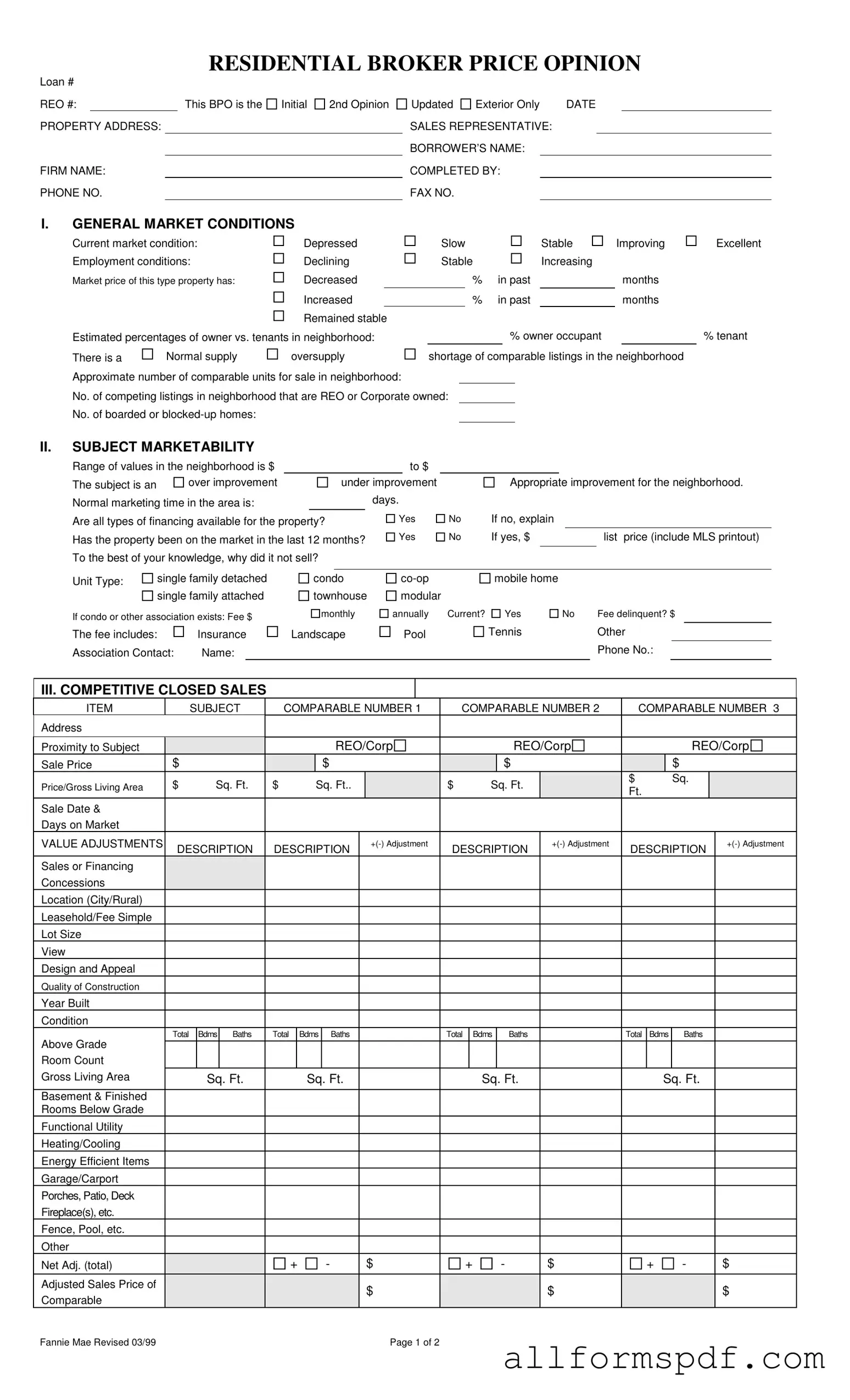Filling out the Broker Price Opinion (BPO) form accurately is essential for obtaining a reliable valuation of a property. However, there are common mistakes that can lead to inaccurate assessments. Here are nine mistakes to avoid.
First, failing to complete all required fields can significantly hinder the BPO process. Each section of the form is designed to gather specific information about the property and market conditions. Leaving out details like the property address, loan number, or sales representative can create confusion and delay the evaluation.
Second, not providing accurate market conditions is a frequent error. The current state of the market—whether it is depressed, stable, or improving—plays a crucial role in pricing. Misrepresenting these conditions can lead to incorrect pricing recommendations.
Another common mistake is neglecting to assess the appropriate improvement level for the neighborhood. Indicating that a property is an "over improvement" or "under improvement" without proper justification can mislead potential buyers and lenders.
Fourth, many individuals forget to include the estimated percentages of owner-occupants versus tenants in the neighborhood. This information is vital for understanding the market dynamics and can impact the property’s valuation.
Fifth, failing to check the financing options available for the property can be detrimental. If specific financing types are not available, this should be clearly stated. This transparency helps potential buyers make informed decisions.
Sixth, not providing a complete list of comparable properties can lead to an inaccurate assessment. Ensure that the comparable listings include necessary details such as sale prices, days on market, and adjustments made for differences in features.
Seventh, overlooking the importance of itemizing repairs needed to bring the property to marketable condition is a critical mistake. A detailed list of repairs can help in accurately estimating costs and setting a realistic price.
Eighth, not including comments on the property’s unique features or potential concerns can leave out important context. Specific notes about environmental issues, easements, or any special concerns should be documented to provide a comprehensive view.
Finally, failing to sign and date the form can invalidate the submission. A signature confirms the accuracy of the information provided and the date ensures that the assessment is current.
By avoiding these mistakes, individuals can ensure that the Broker Price Opinion form is completed accurately, leading to a more reliable property valuation.
